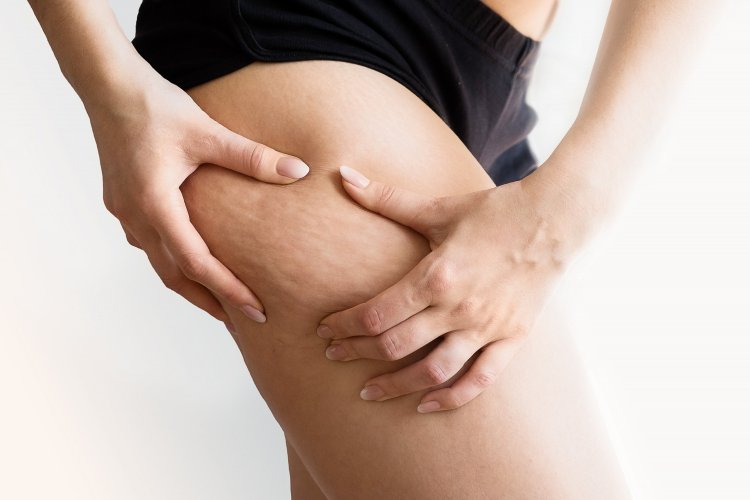What is Cellulite, Its Causes, and Treatment
Cellulite is a prevalent cosmetic condition that affects the skin, causing it to appear dimpled and uneven. It is most commonly found on the thighs, buttocks, abdomen, and upper arms. While it is not harmful, cellulite can affect self-esteem and body image. Understanding its underlying causes and exploring various treatment options can help individuals manage and potentially reduce its appearance.

Causes of Cellulite
Hormonal Factors
Estrogen: Estrogen plays a significant role in fat distribution and connective tissue integrity. As women age, estrogen levels decline, leading to decreased blood flow to connective tissues, causing them to weaken and allowing fat cells to protrude.
Insulin and Thyroid Hormones: Insulin regulates blood sugar levels, while thyroid hormones control metabolism. Imbalances in these hormones can contribute to fat accumulation and cellulite formation.
Prolactin: This hormone, involved in lactation, can also contribute to fluid retention, which exacerbates cellulite.
Genetic Predisposition
Family History: Genetics influence factors such as skin structure, fat distribution, and metabolic rate. If a close relative has cellulite, the likelihood of developing it increases.
Skin Thickness and Elasticity: Genetic factors determine the thickness and elasticity of the skin, which can affect the visibility of cellulite.
Diet and Lifestyle
Poor Diet: Diets high in processed foods, unhealthy fats, excessive sugar, and salt can lead to fat accumulation and fluid retention, worsening cellulite.
Sedentary Lifestyle: Lack of physical activity contributes to poor circulation, muscle tone loss, and increased fat deposits, all of which can make cellulite more prominent.
Smoking: Smoking reduces blood flow and weakens the formation of collagen, which affects the skin's elasticity and structure.
Age and Skin Structure
Aging: As the skin ages, it becomes less elastic, thinner, and more prone to sagging. This allows the underlying fat cells to protrude through the weakened connective tissue.
Skin Structure: The fibrous connective cords tether the skin to the underlying muscle, with fat lying between. When fat cells accumulate, they push up against the skin, while the long, tough cords pull down. This creates an uneven surface or dimpling.
Hydration and Fluid Retention
Dehydration: Proper hydration is essential for maintaining skin elasticity. Dehydration can make the skin thinner and less resilient, making cellulite more noticeable.
Fluid Retention: Excessive salt intake and poor lymphatic drainage can lead to fluid retention, exacerbating the appearance of cellulite.
Treatment Options
Topical Treatments
Caffeine-Based Creams: These creams aim to dehydrate fat cells, making the skin appear smoother. Caffeine temporarily tightens the skin by promoting blood flow and reducing water retention.
Retinol Creams: Retinol helps thicken the skin, making cellulite less visible. Long-term use can improve skin texture and reduce the dimpled appearance.
Massage and Spa Treatments
Endermologie: This deep massage technique uses a device to knead the skin and underlying fat. It improves blood flow, reduces fluid retention, and temporarily smooths the skin.
Lymphatic Drainage: A specialized massage technique that stimulates the lymphatic system to reduce fluid buildup and improve circulation, potentially reducing the appearance of cellulite.
Laser and Radiofrequency Treatments
Laser Therapy: This treatment targets cellulite by using laser energy to break down fat cells and stimulate collagen production, improving skin texture.
Radiofrequency (RF): RF treatments use heat to promote collagen production and tighten the skin, reducing the dimpled appearance.
Injectable Treatments
Collagenase Clostridium Histolyticum (Qwo): This FDA-approved injectable breaks down the fibrous bands causing cellulite. It can provide noticeable improvements after a series of treatments.
Mesotherapy: Involves injecting a mixture of vitamins, minerals, and enzymes into the affected area to break down fat and improve skin elasticity.
Surgical and Minimally Invasive Procedures
Liposuction: While not specifically for cellulite, liposuction removes fat deposits. However, it can sometimes worsen the appearance of cellulite if not performed correctly.
Subcision: A minor surgical procedure where a needle is inserted under the skin to break up the fibrous bands causing cellulite. This can lead to longer-lasting results.
Lifestyle Modifications
Healthy Diet: A balanced diet rich in fruits, vegetables, lean proteins, and whole grains can help reduce overall body fat and improve skin health.
Regular Exercise: Cardiovascular exercise helps burn fat, while strength training builds muscle, both of which can reduce the appearance of cellulite. Targeting specific areas with exercises like squats, lunges, and leg lifts can be particularly effective.
Hydration: Drinking plenty of water keeps the skin hydrated and healthy, reducing the visibility of cellulite.
Cellulite is a multifaceted condition influenced by hormonal, genetic, lifestyle, and structural factors. While there is no definitive cure for cellulite, a combination of treatments and lifestyle changes can significantly reduce its appearance and improve skin texture. For those seeking to manage cellulite, it is essential to consult with a healthcare provider or dermatologist to determine the most appropriate and effective treatment plan tailored to individual needs.
Disclaimer: The information provided in this article is for educational purposes only and should not be considered medical advice. If you have any health concerns or are experiencing symptoms, it is important to consult with a healthcare professional, such as a doctor or clinic, for proper diagnosis and treatment. Always seek the advice of your doctor or other qualified health provider with any questions you may have regarding a medical condition. Do not disregard professional medical advice or delay in seeking it because of something you have read in this article.
#Cellulite #SkinHealth #Hormones #Genetics #DietAndLifestyle #TreatmentOptions #HealthAndWellness #TopicalTreatments #MassageTherapy #LaserTreatments #Injectables #SurgicalProcedures #Hydration #Exercise #HealthyDiet
What's Your Reaction?





















